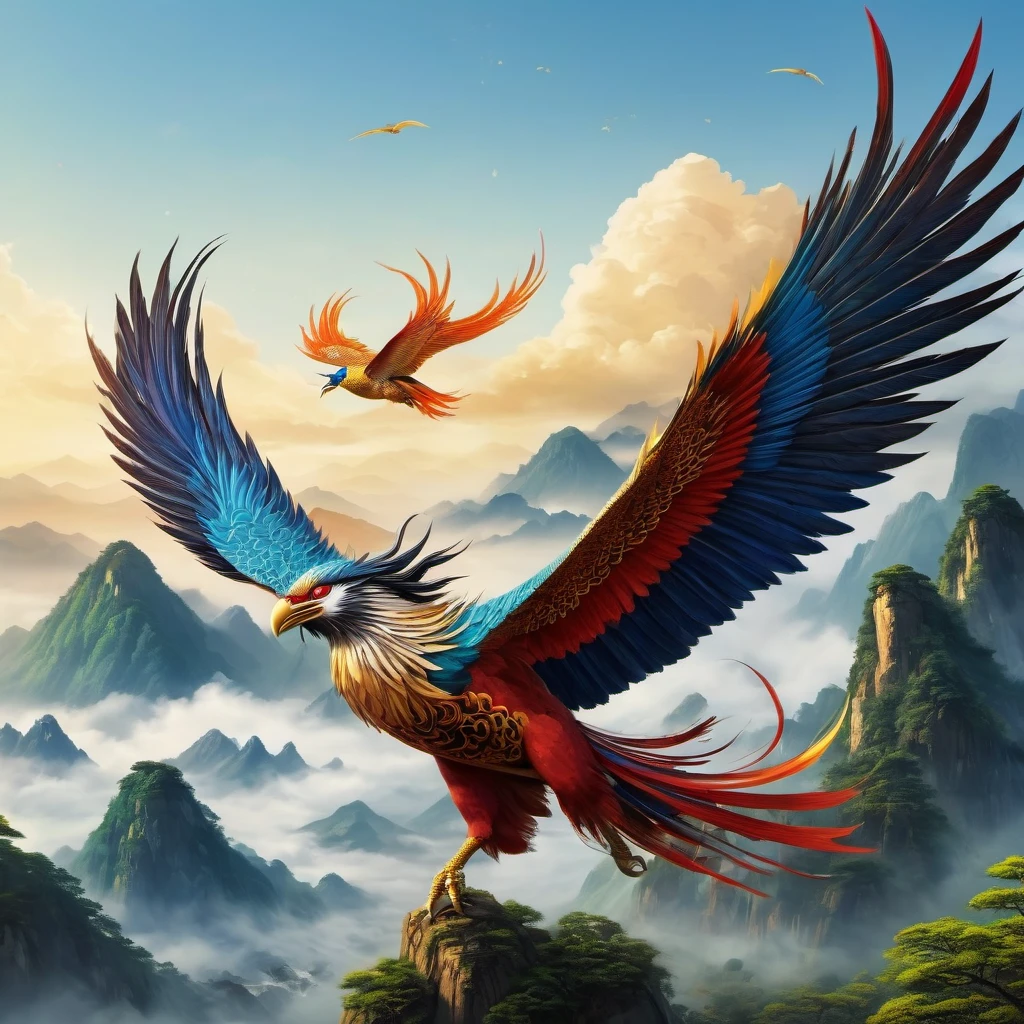Mythical beast name: Kunpeng Biological characteristics: Kunpeng is a massive bi


我這裏有些特別的內容,適合你。
Mythical beast name: Kunpeng Biological characteristics: Kunpeng is a massive bird-like beast, with a body size like a mountain peak and feathers shining with magnificent colors. It has two huge wings that can cover tens of thousands of kilometers, capable of blocking out the sun. Source: "In the Great Wilderness North Scripture of Shan Hai Jing, there is a mountain called North Cabinet where the sea water flows in. There is a fish named Kun with a huge body, which can fly without wings and transform into a bird named Peng with wings as big as the sky, causing Heaven and Earth to collapse with its flap." Cultural implication: In traditional culture, Kunpeng is regarded as a symbol of good omen, implying high aspirations and broad prospects. Kun's flight represents breaking through difficulties and pursuing and ideals, with strong symbolic significance. Image application: The image of Kunpeng is often applied to traditional architecture, crafts, and literary and artistic works, becoming a type of lucky pattern and shape.
提示詞
復製
Mythical beast name: Kunpeng
Biological characteristics: Kunpeng is a massive bird-like beast, with a body size like a mountain peak and feathers shining with magnificent colors. It has two huge wings that can cover tens of thousands of kilometers, capable of blocking out the sun.
Source: "In the Great Wilderness North Scripture of Shan Hai Jing, there is a mountain called North Cabinet where the sea water flows in. There is a fish named Kun with a huge body, which can fly without wings and transform into a bird named Peng with wings as big as the sky, causing Heaven and Earth to collapse with its flap."
Cultural implication: In traditional culture, Kunpeng is regarded as a symbol of good omen, implying high aspirations and broad prospects. Kun's flight represents breaking through difficulties and pursuing and ideals, with strong symbolic significance.
Image application: The image of Kunpeng is often applied to traditional architecture, crafts, and literary and artistic works, becoming a type of lucky pattern and shape.
共 0 條評論
0
2
0









